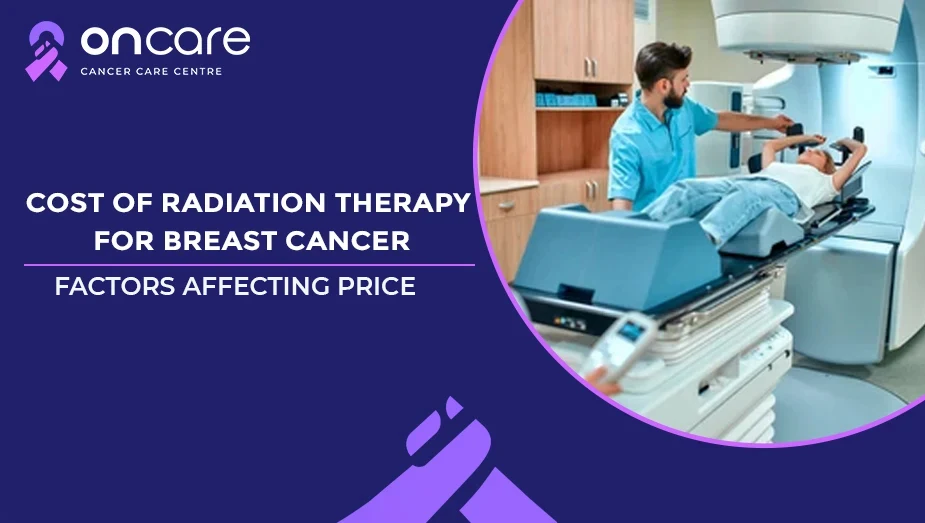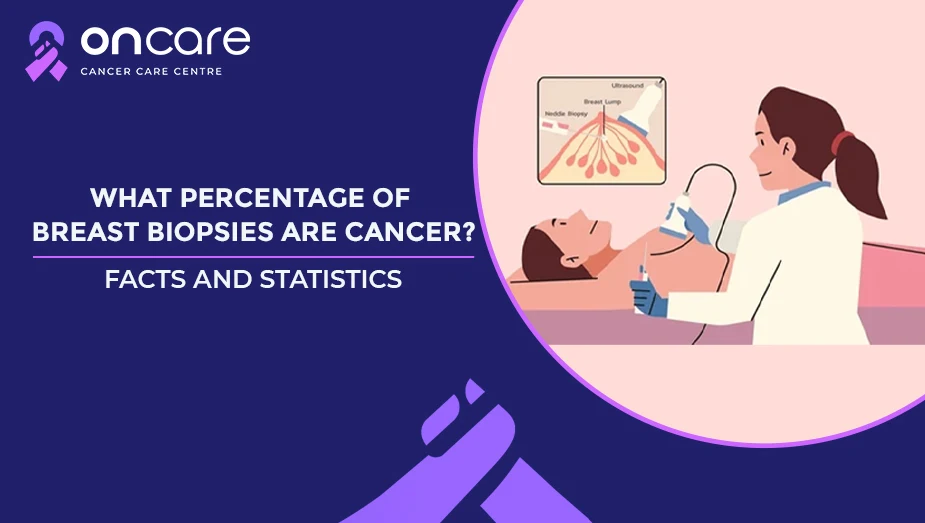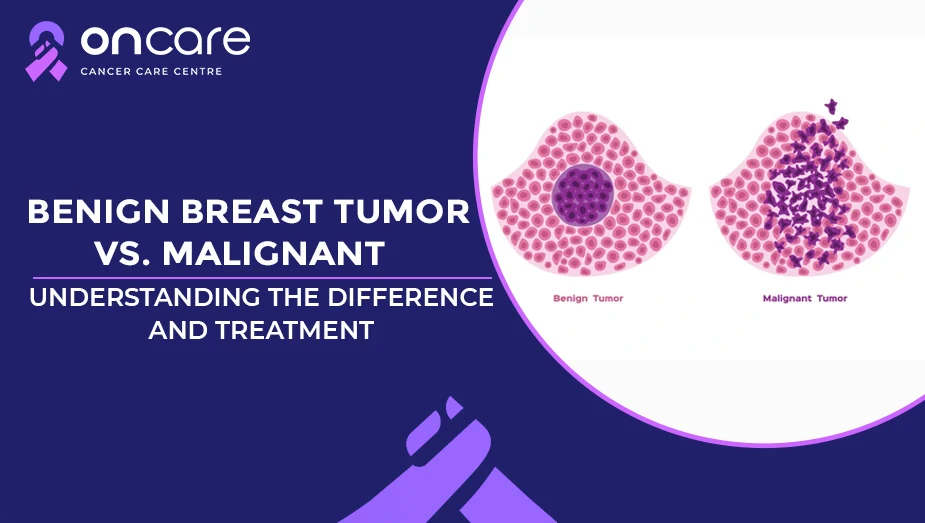Table of Contents
ER/PR+ vs ER/PR– Breast Cancer: Causes, Diagnosis, and Treatment Options

When it comes to breast cancer, understanding different variants and their subtypes is like winning half the battle, or even more, in some cases. If your breast cancer diagnostic report contains ER and PR, then these letters are used to represent the hormones like estrogen and progesterone, and whether your tumor listens to them changes for everything. In the realm of breast cancer, being diagnosed with ER/PR-positive and -negative diagnoses are not just any clinical labels; they are signposts used to guide your treatment journey, through care, and hope!
In this article, we’ll dive deeper into the receptor statuses' meaning, and why they matter and how they shape everything from causes and diagnosis to the treatments ahead for the patients!
Why does ER/PR matter in Breast cancer diagnosis?
In the context of breast cancer, there are two significant biomarkers that are considered crucial for the diagnosis and its treatments, including:
- The estrogen receptor (ER) is a type of protein on (or inside) some cancer cells that helps to bind the hormone estrogen.
- The progesterone receptor (PR) is a type of protein on (or inside) some cancer that binds the hormone progesterone.
Here’s why it matter:
If a person is diagnosed with ER-positive breast cancer, which is commonly known as ER-positive cancer, this means that the cancer cells have receptors for estrogen; these may help the tumor to grow.
If the patient has been diagnosed with positive (PR+), the cells have receptors for progesterone. If no receptor is present (ER negative and PR negative, often written as ER-/PR-), then the tumor does not rely on these hormones to grow, at least not in the same way. Hormonal therapies work by blocking these hormones that may not be effective.
Why is testing these hormones crucial?
The presence and absence of these receptors helps the healthcare providers classify the cancer subtype and decide further treatment options for patients.
Causes & Risk factors
There are some factors that increase the risk of hormone-receptor-positive breast cancer, including:
- Long-term exposure to estrogen (e.g., early menstrual periods or late menopause can raise the risk).
- Obesity, hormone replacement therapy, and other hormonal imbalances, because all of these factors can influence estrogen/progesterone levels, might play a role.
- The fact is that this cancer is driven by hormone receptors, which means, in simpler terms, that the biological tumor is such that its ‘hormonal imbalance’.
Diagnosis and Testing
Here are some of the key factors that affects diagnosis relating to hormone receptor status, including:
- Biopsy: A core needle or surgical biopsy performed to collect the tissue.
- Immunohistochemistry tests: These are a type of lab test used to detect ER and PR in cancer cells; in many cases, if at least 1% of cells stain positive for the receptor, the tumor is considered typically positive.
Treatment options for based on ER/PR Status
Here are some of the treatment options used for ER/PR positive status cancer in breasts, including:
These tumors are often fueled by hormones, so the treatments often involve hormonal (endocrine) therapy, additionally, healthcare providers recommend the usual combinations of surgery, radiation and in some cases, chemotherapy also advised.
Here are some of the treatment options, including:
- Surgery: These are often performed to remove the tumor or mastectomy depending on the size of the tumor, and its location and preference.
- Radiation therapy: These treatments are especially used after lumpectomy in the patients.
- Chemotherapy: These treatments are used in patients, mainly depending on the risk factors, including grade, size, lymph node status, doubling time, etc.
- Hormonal therapies:
- Selective estrogen receptor modulators (SERMs) like tamoxifen.
- Aromatase inhibitors (for post-menopausal women) like letrozole, exemestane.
- Ovarian suppression in (pre-menopausal women) via drugs or surgery.
- Fulvestraint is used in some cases, which blocks estrogen receptors.
Why it works:
These types of tumors have estrogen/ progesterone receptors, so by cutting off the hormone stimulus, it helps to reduce the tumor growth.
Treatment options For ER/PR Negative Cancer
The tumor doesn’t depend on the estrogen/progesterone, at least via those receptors; hormone therapies are not used or considered less effective.
Here are some of the treatment options used for this cancer:
- Surgery and radiation therapy: These treatments are often considered as vital and often used for local control, consistent with standard treatment practices.
- Chemotherapy: This other important treatment plays a bigger role in the cancer treatment in these types of cancer.
In some cases, targeted therapies may apply depending on the biomarkers present in the cancers, including HER2 positivity, BRCA mutation, immunotherapy for certain types.
Why Hormone receptor really matters!
When a patient is diagnosed with breast cancer, their hormone receptor status (ER/PR) is one of the first and most important pieces of information. This information guides the patients to understand what therapies will work and what the expected outlook will be.
For patients with HR+ breast cancer, there is an additional benefit of using hormone therapy, which is less toxic, in many cases, than chemotherapy, and it can reduce the risk of recurrence.
Meanwhile, HR- breast cancer, because hormone therapy won’t work, doctors will often advise more aggressive treatment approaches, including chemotherapy. Many patients might need more frequent monitoring for recurrence.
In the breast cancer research perspective, understanding why some HR+ cancers become resistant (Lose HR, activate other pathways) is a big concern. Better biomarkers are therapies that are evolving.
For patients and caregivers: A hormone receptor status helps patients to understand the treatment expectations or the treatment plan and ask questions of their doctors, like, "Why am I getting my hormone therapy?" Etc.
Tips for patients and caregivers
Here are some of tips for both patients and care givers, including:
- Consult your Oncologist: Ask your oncologist questions like what the PR and ER status is, what percentage of cells are positive, its intensity, and why these details matter!
For example, if you are diagnosed with HR+, ask more about hormone therapy options and discuss side effects, including hot flashes, joint pain, bone health, etc.
If you are HR-, ask what types of treatments are planned, and why, since these hormone therapy isn’t effective in some patients, you might need chemo/ radiation, etc.
- Keep a copy of your pathology report and Tumor marker report: Always keep your medical reports, including your pathology report and tumor marker report, as they can guide the decisions and get a second opinion.
- Long-term follow-up is important: If you are HR+, then chances of recurrence might occur many years down the line.
- Practice healthy lifestyle factors: Following a healthy lifestyle, such as taking in a healthy diet, practicing gentle physical activities, and limiting alcohol consumption, can help in risk reduction and overall health!
Consult Today
If you are diagnosed with breast cancer, understanding these types of cancer, ER/PR positive vs. ER/PR negative, is essential. These often affect how the disease is classified, its treatment options, its prognosis, and the importance of monitoring, which is necessary going forward.
At Oncare, we offer premium-quality cancer treatments, including advanced cancer surgeries at an affordable price range with an experienced cancer specialist consultation.
If you or any loved ones of yours are diagnosed with cancer, then visit Oncare Cancer Center and book an appointment with our experienced cancer specialist today! Get an estimated cost of your cancer treatments today!
Frequently Asked Questions
Here are some of the treatment options used for these types of breast cancer, including:
- Breast cancer surgery to remove tumors
- Radiation therapy
- Chemotherapy
- Hormone therapies like aromatase inhibitors to reduce the amount of estrogen in the body.
- Selective estrogen receptor modulators (SERM) to reduce the risk that breast cancer will recur (come back)
Here are some of the treatment side effects of ER Positive breast cancer, Including:
- Joint pain or stiffness
- Fatigue
- Weight gain
- Less or loss of interest in sex
- Hot flashes
- Tender or swollen breasts
Here are some of the risk factors for ER Positive breast cancer, including:
- Having early periods
- Having late menopause
- Giving birth late in life
- Taking hormone therapy for menopause symptoms
Book an Appointment
Related Blogs

Cost of Radiation Therapy for Breast Cancer: Factors Affecting Price
Discover more about the cost of radiation therapy for breast cancer and factors affecting the cost of radiation therapy for these cancer treatments, and why cost discussion matters!

What Percentage of Breast Biopsies Are Cancer? Facts and Statistics
Discover more about what percentages of breast biopsies are cancer, types of breast biopsies and its cancer detection rates, BI-RADS score and its cancer risks!

Hormonal Therapy for Breast Cancer: Cost and Availability in India
Explore hormonal therapy for breast cancer in India, how it works, costs, availability, side effects, and expert care to support your treatment journey.

Benign Breast Tumor vs. Malignant: Understanding the Difference and Treatment
Learn the difference between a benign breast tumor and a malignant one. Understand symptoms, diagnosis, treatment options, and how to manage your breast health.

